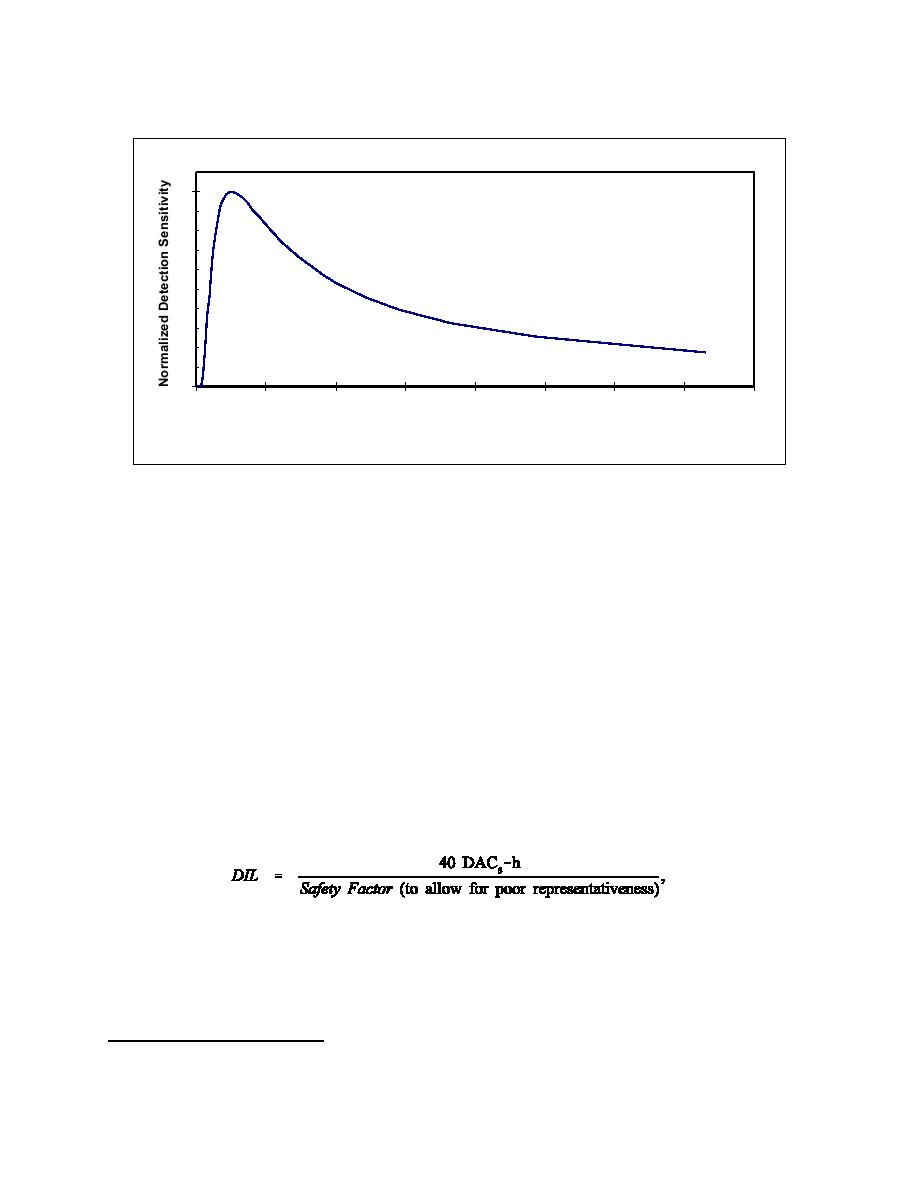 |
|||
|
|
|||
|
Page Title:
Factors Affecting the DIL for Air Sampling |
|
||
| ||||||||||
|
|  DOE-STD-1121-98
1
0
0
50
100
150
200
250
300
350
400
Frequency, N (samples per year)
Figure 2. Plot of the Normalized Detection Sensitivity as a Function of Number of Samples per
Year for 3H
4.4.3 Factors Affecting the DIL for Air Sampling
A given air monitoring result may indicate a concentration higher or lower than that in the air
breathed by a particular worker or workers. How well an air sample reflects the concentration actually
inhaled by a worker is called "representativeness." Bioassay results, which are specific to individual, do
not have this property. Efforts to correlate bioassay measurements with workplace air monitoring have
shown that intakes predicted on the basis of general area (GA) air monitoring results may have limited
correlation with intakes based on bioassay results. Breathing zone (BZ) air samples are more
representative.
Air monitoring results, depending on where the sampler input is located, may underestimate intakes
due to the "Pig Pen" effect2, in which air is more contaminated near a worker than at some distance away.
The explanation for the Pig Pen effect is simply that the worker is generating the aerosol. It is important
because it impacts the degree to which an air sample represents the concentration breathed by a worker,
and it leads to the need to consider a safety factor when formulating a DIL for air monitoring.
For an IL of 100 mrems of HE,50,
(7)
where the subscript "s" denotes "stochastic." Depending on the location of the air sampler with respect to
the worker's breathing zone, the value of Safety Factor may be in the range of 1 to 10, based on NUREG-
1400 (Hickey et al. 1993) and Caldwell's work (Caldwell 1972). Caldwell showed that, for plutonium
work, fixed station air samplers tended to dramatically underestimate intakes assessed from fecal samples,
2
Named after the Charles Schultz character in the PeanutsTM comic strip who walks around in a cloud
of dust and debris.
38
|
|
Privacy Statement - Press Release - Copyright Information. - Contact Us |